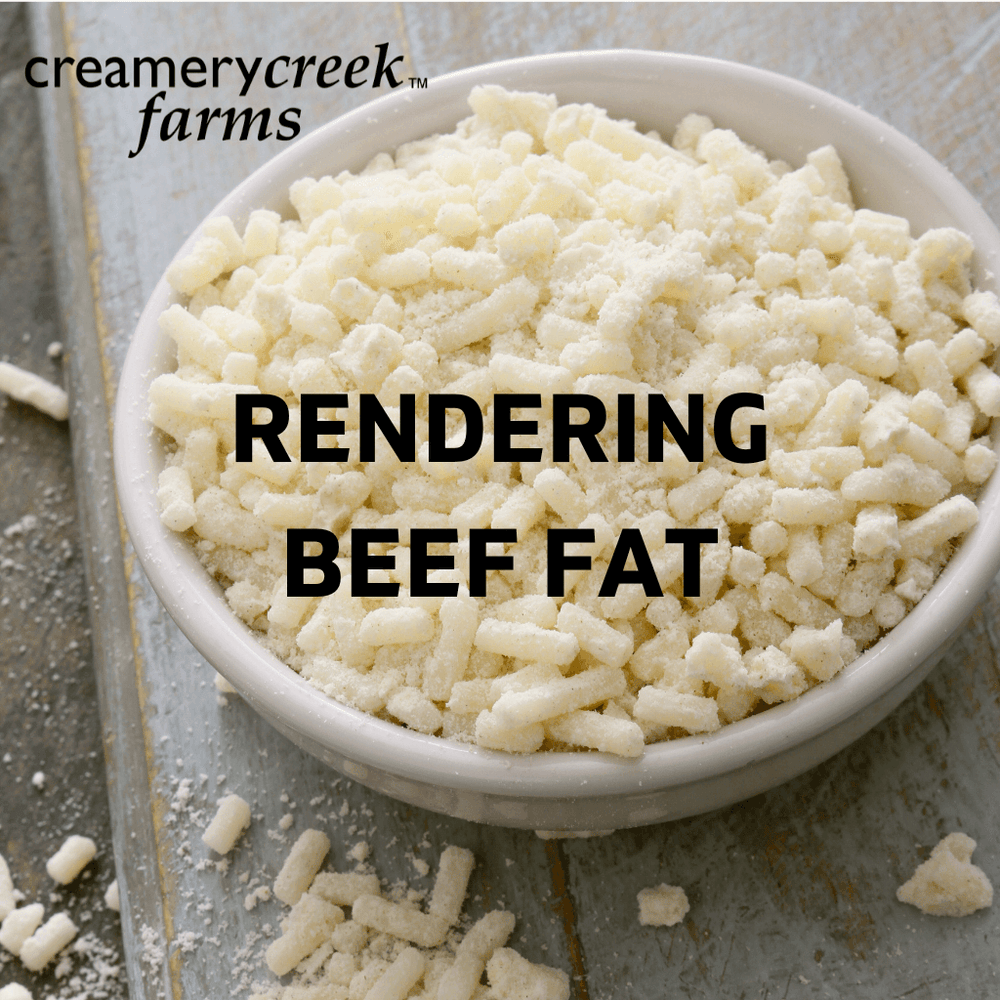
Save your beef fat trimmings!
If you’ve ever trimmed a brisket or a well-marbled beef roast, you’ve probably ended up with a small pile of beautiful beef fat. Please, don't toss it! Save it and make something useful! Rendering beef fat (also known as tallow) is easy, rewarding, and a great way to stretch your beef dollar and make the most of every cut. Plus, homemade tallow from homegrown pasture-raised beef is unmatched when it comes to cooking, frying, or even making homemade candles and soaps!
What You’ll Need:
-
Beef fat trimmings (from brisket, chuck roast, or any well-marbled cut of dry-aged beef)
-
A sharp knife
-
A heavy-bottomed pot or slow cooker
-
A fine-mesh strainer or cheesecloth
-
Good old-fashioned canning jars for storage
Step 1: Trim and Save the Fat
When you’re prepping a brisket or roast before cooking, take a few extra minutes to trim off any large pieces of white, firm fat. Avoid pieces with too much meat attached (a little is fine, but you want mostly fat). Instead of throwing it away, start a quart-sized bag in your freezer and keep adding to it every time you trim a roast. Before you know it, you’ll have enough to render a nice big batch—no waste, just pure, useful tallow!
When you’re ready to render, cut the frozen fat into small chunks or, for best results, run it through a food processor for finer pieces. The smaller the pieces, the quicker and more evenly they’ll render down.
Step 2: Start the Rendering Process
If the pieces are smaller, it's ok to just put it straight into your pot. If your fat is bigger, or from our kidney suet nuggets, it might be worth running it through your meat grinder with a coarse plate, it makes the process so much faster!
Place the fat into a heavy-bottomed pot or slow cooker. Turn the heat to low—slow and steady is key! As the fat melts, it will separate into golden liquid tallow and crispy bits called cracklings. Stir occasionally to prevent sticking and burning.
Step 3: Strain and Store
Once the fat is fully melted and the cracklings are golden brown, remove from heat. Line a fine-mesh strainer with cheesecloth and carefully pour the hot liquid through it into clean canning jars. This helps remove any small bits, leaving you with smooth, pure tallow. Let it cool at room temperature before sealing and storing.
If you love really pure fat, repeat this step 2 additional times.
How to Use Rendered Beef Fat
-
Cooking & Frying: This is my secret little starting step for recipes—I love frying onions and garlic in beef fat before I really get going. It also works wonders for roasting veggies, searing steaks, or frying potatoes.
-
Baking: Tallow makes amazingly flaky pie crusts and biscuits. Matched, only by butter, in my opinion!
-
DIY Projects: We have customers who make beef fat into candles, soap, or even skin balms. Sky is the limit, I love to hear what you plan to do, send me a note!
Bonus: Don’t Waste the Cracklings!
Those crispy little bits left behind? That’s beef cracklings, and they’re delicious! Sprinkle them with salt and enjoy as a snack or use them as a topping for salads and soups. Joshua loves these!
Give it a Try!
Rendering beef fat is a versatile way to get the most out of your dry-aged, homegrown Wisconsin farm beef while creating a flavorful, useful cooking fat. Keep that freezer bag going, save every bit, and you’ll always have a stash ready to go. Give it a try the next time you’re trimming beef—you’ll never look at fat the same way again!
From our Creamery Creek kitchen to yours—happy cooking!
XO XO,
Louisa



Leave a comment
Also in Farm Blog
Thawing Big Cuts: How Much Time to Pull from the Freezer
Ever wondered how long it really takes a ham or prime rib to thaw in the fridge? We’ve all been there, staring at a frozen roast two days before dinner. Here’s your guide to safe, slow thawing, including how many days to allow for bone-in versus boneless cuts and when to pull from the freezer so your meal goes off without a hitch.
Plus, a reminder why we only ship frozen, because that’s what keeps your meat safest and freshest.
Keep reading
What’s the Difference Between A1 and A2 Milk
Ever wonder if Creamery Creek milk is A1 or A2? The truth is, it’s a natural blend. Our Holstein herd includes both A1A2 and A2A2 cows, and while we track it through genomic testing, we don’t separate the milk. Here’s what that means and why we care about it.
Keep reading
Behind the Scenes: How Your Order Ships from Our Farm
Ever wonder what happens after you click “Place Order”? Take a peek behind the scenes to see how your Creamery Creek box is packed, shipped, and delivered straight from our family farm with care and attention in every step.
Keep reading